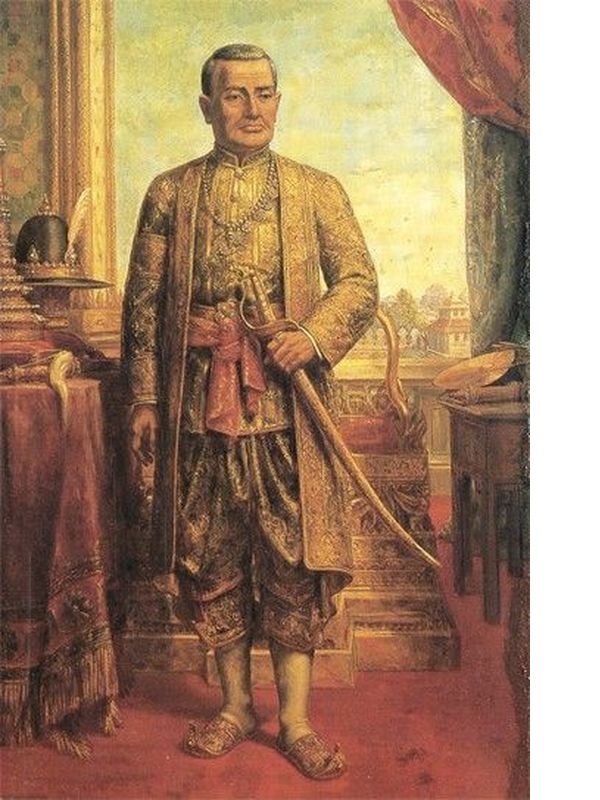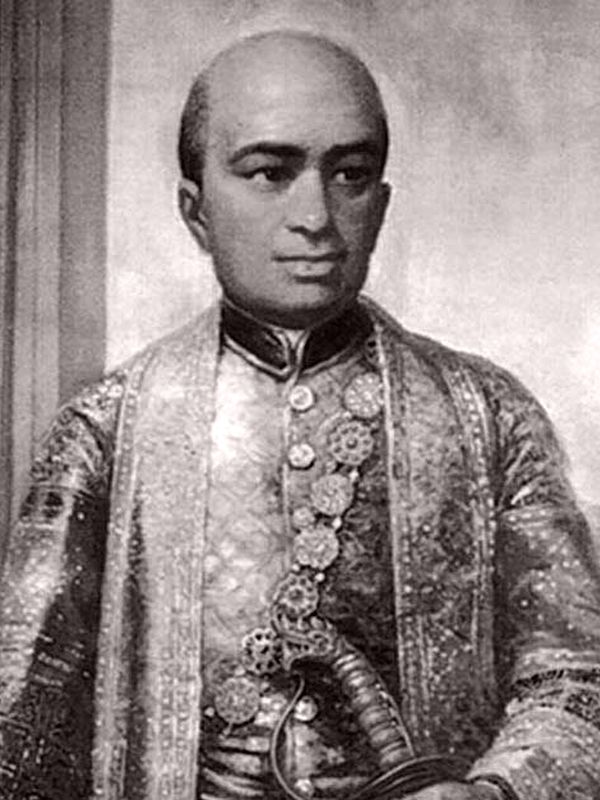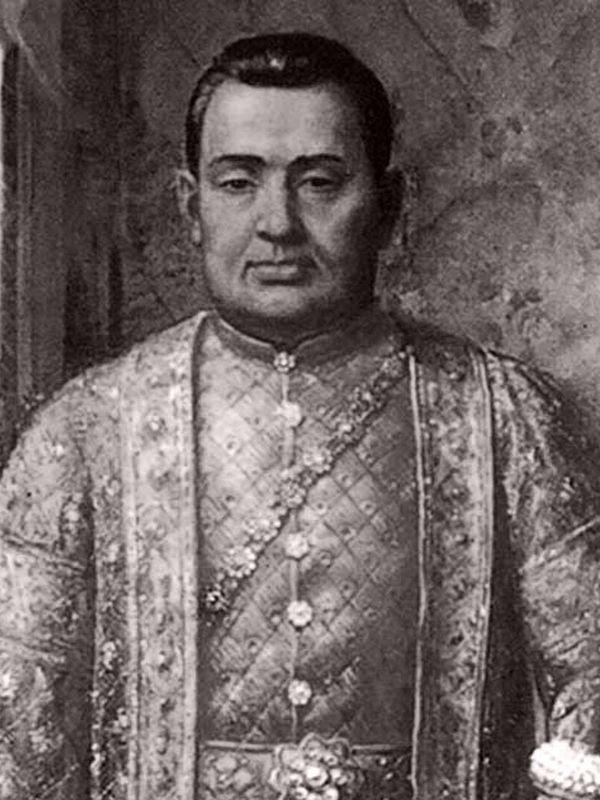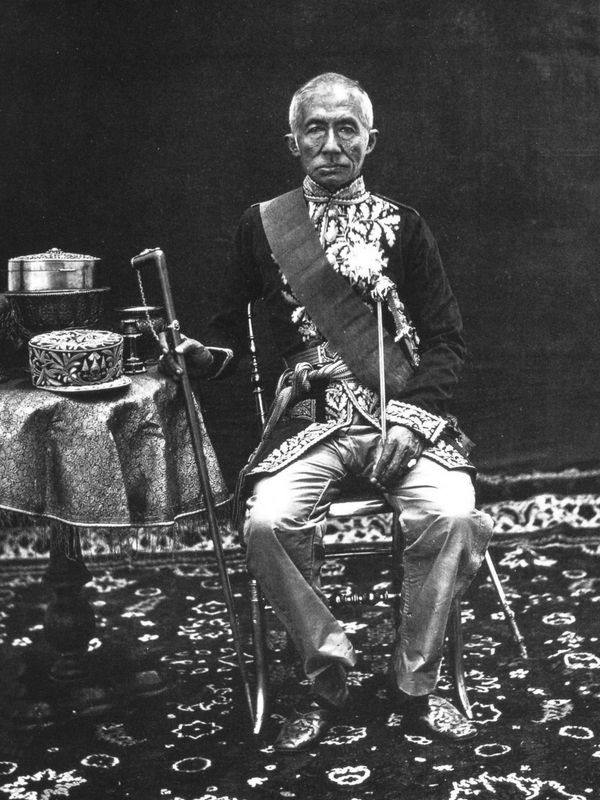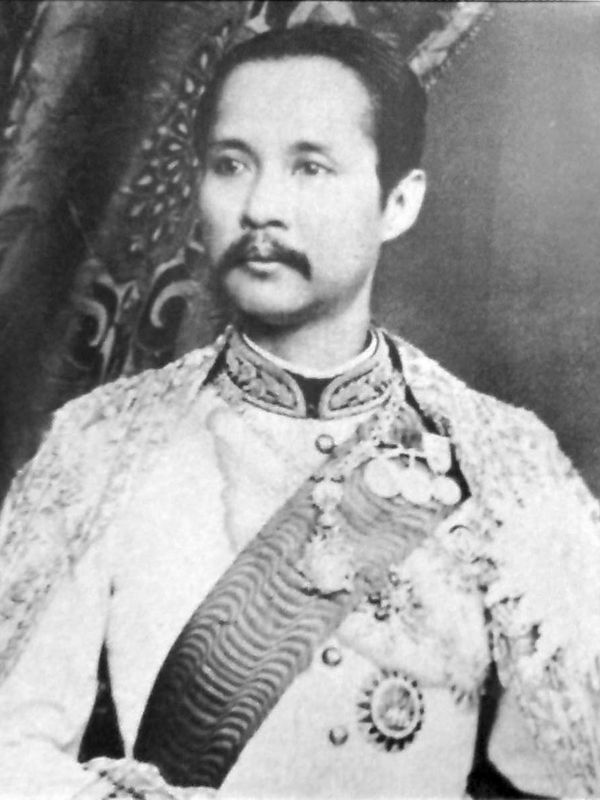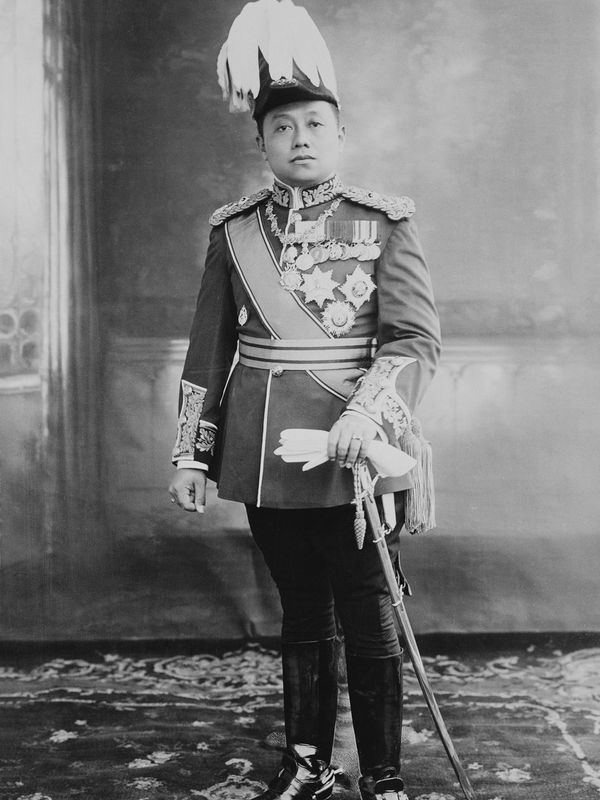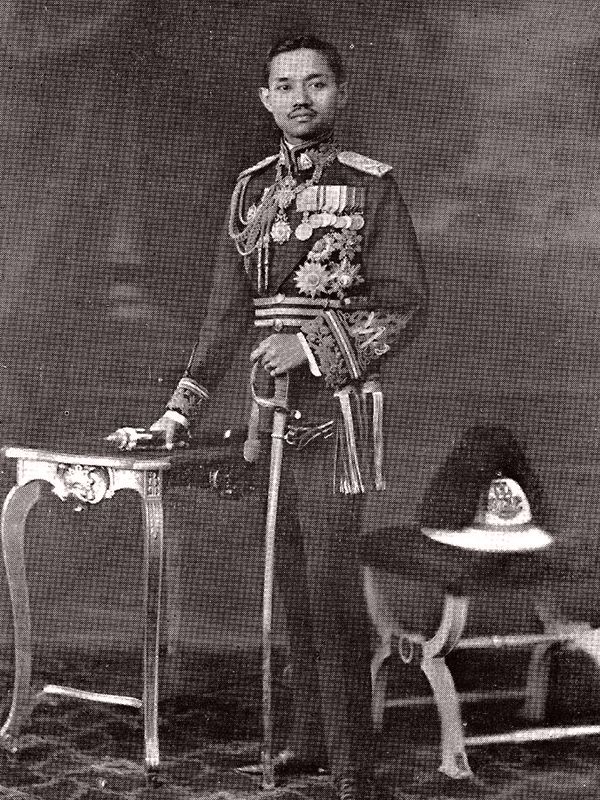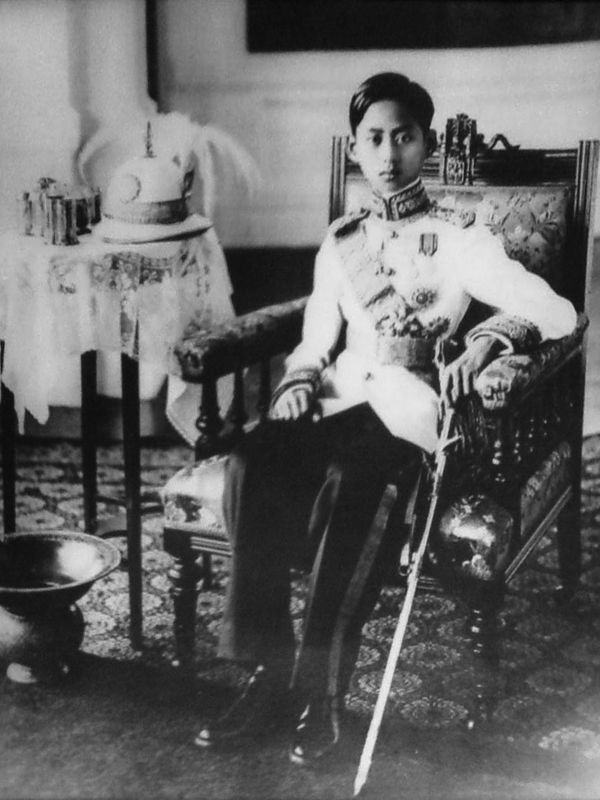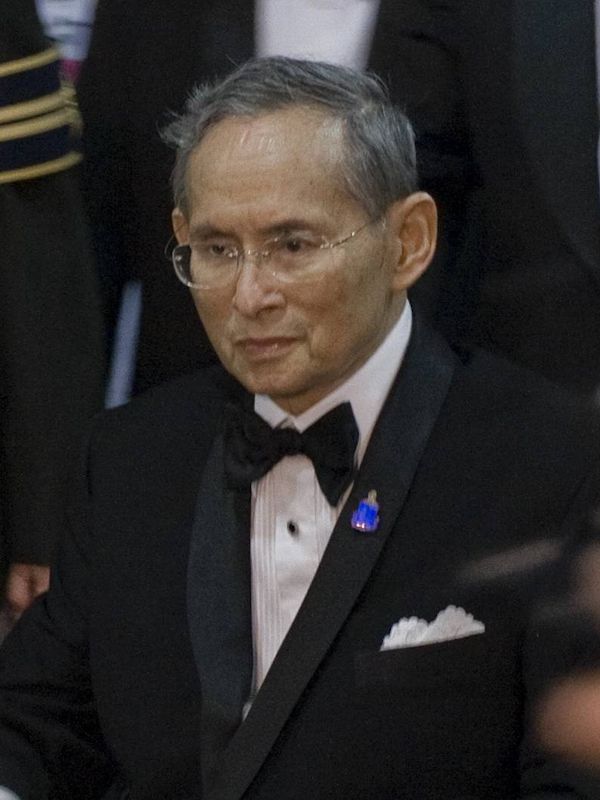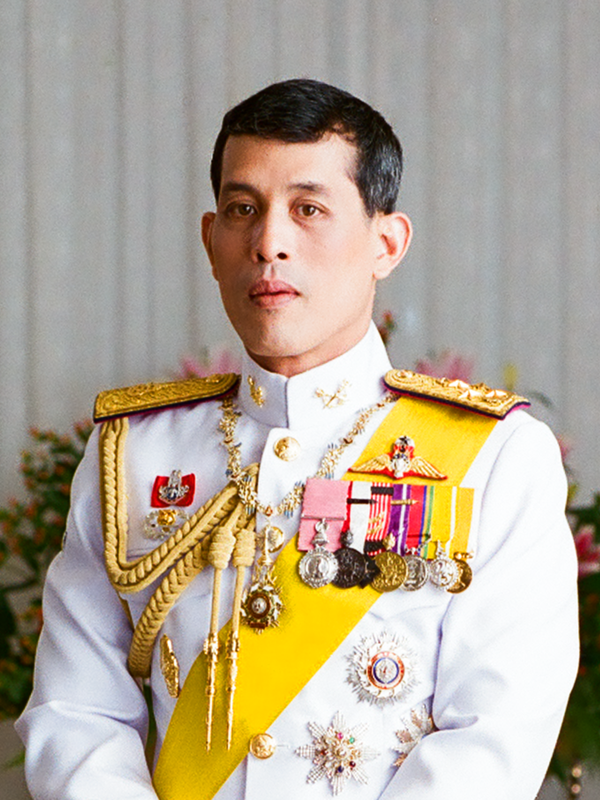The Chakri dynasty is the name given to the succession of kings of Thailand since 1782. Thailand being a constitutional monarchy, these kings are still on the throne of our day, although they have little real power. They all bear the same name of reign, "Rama". The founder was Rama I, his successor was Rama II. The current king is Rama X, he took office in 2016.
This dynasty has experienced two major events in its history: The transformation of the regime of absolute monarchy into a constitutional monarchy (in 1932) and that of the Kingdom of Siam in the Republic of Thailand, in 1939. But these two events should not be forgotten that it is the foundation of this dynasty, in 1782, which is at the origin of the creation of the city of Bangkok.
Origin of the dynasty
Like everywhere in the world, when a royal dynasty is constituted, it is because the previous one has disappeared. There may be several reasons for this, most of the time it is a reversal of the regime in place. Sometimes, it is a legal reversal, as the fact that a succession can be done, in some countries, only by the men and that the last sovereign had only girls. Sometimes also the establishment of a new dynasty is due to the chaos engendered by a revolution, a popular uprising. In the case of the Chakri dynasty, it was a military defeat that triggered the process, and a coup that ended it.
Before these events the situation was relatively simple. The ruling dynasty was that of the kingdom of Ayutthaya, a city currently 60 km north of Bangkok. It was a kingdom founded in 1351 whose territory took roughly the current Thailand, to some regions of the North and East near. This kingdom obviously had many avatars, but the constant struggle with the Burmese neighbors provoked the war too much. In 1767 the Burmese seized the capital and partly destroyed it. The king died and his son Taksin, who participated in the defense of the city, managed to escape. The kingdom was then cut into six, Taksin becoming the king of Thonburi, a town west of Ayutthaya. He was followed by General Thong Duang, his friend. In 15 years Taksin took over a large part of his country, he unified and developed his economy. But in 1782 he was declared insane and was executed by Thong Duang on April 7th. The latter then took his succession under the name of Rama I.
Thus the ephemeral kingdom of Thonburi came to an end, replaced by that of the kingdom of Siam.
Rama I : The founder
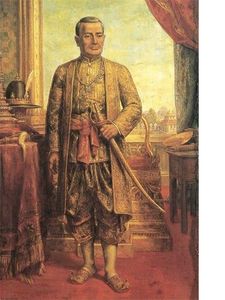
Rama I
Born in Ayutthaya on March 20, 1737 - Died in Bangkok on September 7, 1809 - Ruled from April 6, 1782 to his death.
When he came to power Rama I organized his kingdom differently. He moved his capital to Bangkok, a city created ex-nihilo on a surface south of Ayutthaya. He built a royal palace near which he installed a temple to house the Emerald Buddha, considered at that time as a spiritual object all important. Rama I continued the work of reunifying the kingdom by presenting unpublished legislative texts and recompiling the Ramakian, the Thai national narrative. It is a set of texts based on the Ramayana, a set of popular as well as legendary Indian stories that had been imported by merchants at the end of the 1st century. By rewriting it and installing it in the Thai environment, this text became a national narrative that cemented the future nation.
Otherwise, Rama I fought several times against the Burmese who tried twice to take Ayutthaya.
Learn more about Rama I.
Rama II : The literary
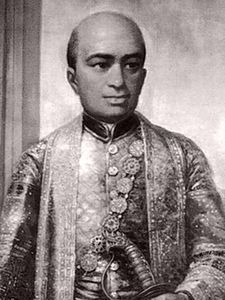
Rama II
Born in Samut Songkram on February 24, 1767 - Died in Bangkok on July 21, 1824 - Ruled from September 7, 1809 to his death.
The son of Rama I was fortunate not to experience major armed conflicts during his reign. Inheriting a relatively stable kingdom, he was able to focus on improving business ties and developing the arts in Thai culture.
The commercial ties were essentially woven with the first westerners who began to arrive on the coasts of Southeast Asia. But in spite of the interesting possibilities that they could represent, Rama II preferred to turn towards the lands and to trade with the surrounding peoples, and in particular with the Chinese who also began to open on the outside. It is his son, Rama III, who will develop more seriously trade links with Westerners.
The other peculiarity of the reign of Rama II is the development of the Thai arts and more particularly literature, which he was keen on. His death, in July 1824, caused a short succession crisis that pushed his son, too young, to the advantage of his nephew.
Learn more about Rama II.
Rama III : The conqueror
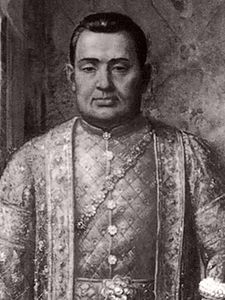
Rama III
Born in Bangkok on March 31, 1787 - Died in Bangkok on April 2, 1851 - Ruled from July 24, 1824 to his death.
Rama III was one of the most important king of the Chakri dynasty, with Rama I and Rama VI. Mounted on the throne when he was only the nephew of his predecessor, he owed this honor to the fact that the eldest son of Rama II was too young to govern.
The reign of Rama III is made of a long struggle against the neighbors of the kingdom of Siam. The relative peace his uncle enjoyed disappeared with his accession to the throne and the Laotian attack on Bangkok. It must be said that Laos had been subjected years before and that his king, captured young by the Siamese and educated according to Thai tradition, tried to regain independence to his kingdom. But he was beaten. Rama III also faced the Burmese people, a perennial enemy of the Thais, who were ruled by the English with whom Rama III was linked. But a difference emerged between the English and the Siamese and they fell back on their territory, being content to make a few trade with their allies. Finally, Rama III was also involved in a conflict with the Cambodians, a conflict that resulted in the entry of the French into Southeast Asia.
Learn more about Rama III.
Rama IV : The Father of Science and Technology
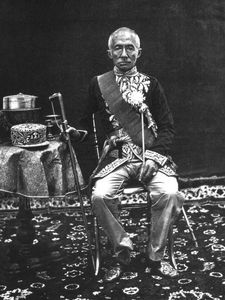
Rama IV
Born in Bangkok on October 18, 1804 - Died in Bangkok on October 1, 1868 - ruled from April 2, 1851 to his death.
Rama IV is known by his birth name, Mongkut. He was the second son of Rama II, but he could not take over from his father because of his young age and the ambitions of his cousin, the future Rama III, older and therefore more experienced. However, upon the death of Rama III, it is Mongkut who ascended the throne, but without being able to pass the line of inheritance to his children.
Rama IV, young, entered the orders as it was of tradition. It was common for young men to take the habit of a Buddhist monk for a year before returning to civilian life. But when his father died, Rama IV was a monk for a year already. He returned to civilian life, but his rejection of the throne made him return. He spent his whole life as a monk, except for the years he reigned.
His reign is characterized by Western pressure on colonization. If the French already held Viet-Nam and the British Burma, Rama IV had to fight many times against this distant enemy to maintain control of the kingdom of Siam. These struggles were essentially diplomatic, which was more difficult to do than he wanted to bring his kingdom into the modernism they brought them. If only one of the successes of Rama IV were to be retained, that would be his ability to maintain his independence while bringing his kingdom into the modern era. But the independence he managed to keep was not without consequences: He lost control over Cambodia, Laos and even Malaysia.
Rama V : The modernizer
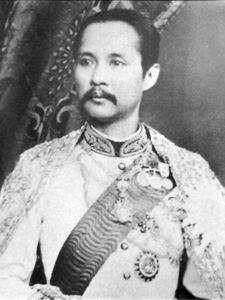
Rama V
Born in Bangkok on September 20, 1853 - Died in Bangkok on October 23, 1910 - ruled from October 1, 1868 to his death.
Rama V is the king of Siam who has suffered the most from Western influence. The pressure put by the European countries, but also American, intensified during his reign. If it had to fight against this attempt of colonization, it ended up, finally, by a massive westernization of the practices and the local customs. Thus advanced notions of medicine have been introduced, as well as the decimal system, the abolition of slavery, and so on. Rama V built universities to train his people, he also created naval, military, and administrative schools. The latter is also deeply reworked during his reign, with increased centralization of public offices.
Industrially, the country is developing rapidly: Creation of a modern railway network, then of terrestrial communication channels. Rama V was the first king to move to foreign countries: China, India, Singapore, then a tour in Europe that went through France. These displacements marked the will of the sovereign to inscribe his country in the world, and it is also a milestone in the history of the future Thailand.
Rama VI : The eccentric artist
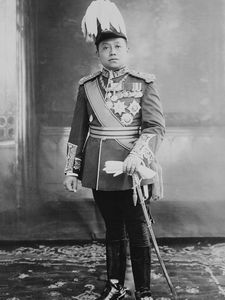
Rama VI
Born in Bangkok on January 1, 1880 - Died in Bangkok on November 26, 1925 - Ruled from October 23, 1910 to his death.
Rama VI should never have become king of Siam, not because he did not have the legitimacy for, but rather because these unorthodox mores should have removed him from a role as important as that of kingdom ruler. But his father had put in place the rule of primogeniture that the elder of each king take his succession, which had not been done so far.
He ruled the kingdom for 15 years during the First World War. His initial position of neutrality, then his alliance with the victorious forces, will make his kingdom stronger than it was before he entered the political scene. It must be said that compared to its predecessor, Rama VI multiplied even more its links with foreign countries, which was in the air anyway. In internal politics, he pursues the policy of modernization of the state and introduces a good democratic party also in the air of time. Rama VI seems to have understood in time the desires of democratization of his people before it is too late. It is also his successor that will cause the fall of the kingdom and the establishment of a republic.
As a personal Rama VI was a fine scholar. He multiplied acts in favor of Thai culture, getting closer to a nationalist political regime.
Rama VII : The exile
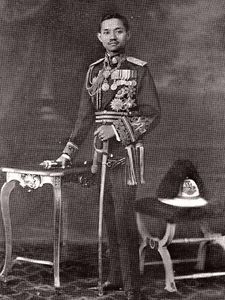
Rama VII
Born in Bangkok on November 8, 1893 - Died in Surrey (England) on May 30, 1941 - ruled from November 26, 1925 to March 2, 1935.
Rama VII was the last king of Siam. He is the one under whose reign the kingdom ceased to exist, replaced by a constitutional monarchy that changed its name to "Kingdom of Thailand". His reign lasted only 9 years, it is the shortest of all Chakri monarchs.
he main fact of Rama VII in power was to consider the revolt of 1932 as a revolution. This realization led him to continue his reign in another form, and allowed the country to remain stable. It was in 1932 that an increasingly large group of Thais decided to overthrow the absolute monarchy in favor of a more democratic political system. On June 24, 1932 they took action and seized the throne room, despite the fact that the king was not in the palace. They arrested the main officers present and sent an ultimatum to the king to agree to make a democratic transition in the country. They proposed that the kingdom become a monarchical republic, but in case of refusal, they reserved the right to impose a republic.
The king immediately accepted the proposal. On the 26th he was back in Bangkok and received members of the rebellion. He then made an unthinkable gesture until then: At their entrances, he got up. This simple gesture was the acceptance that the king was now neither more nor less than the rebels, because previously the king would never have risen in the presence of anyone.
The new country was organized around popular election. Rama VII had a more symbolic role, but he quickly disagreed, so he preferred to exile voluntarily to England, where he ended his life. He abdicated on March 2nd, 1935.
Rama VIII : xxxxxxxx
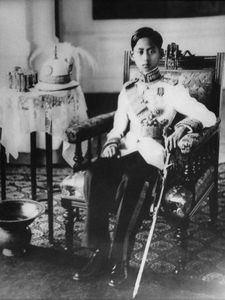
Rama VIII
Born in Heidelberg (Germany) September 20, 1925 - Died in Bangkok on June 20, 1946 - Ruled from March 2, 1935 to his death.
Rama IX : xxxxxxxx
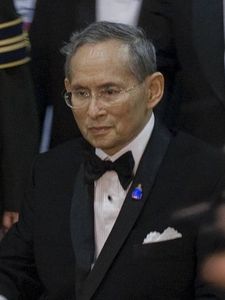
Rama IX
Born in Cambridge (United States) December 5, 1927 - Died in Bangkok on October 13, 2019 - Ruled from June 9, 1946 to his death.
Rama X : xxxxxxxx
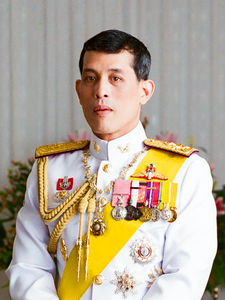
Rama X
Born in Cambridge (United States) July 28, 1952 - Reigns since October 13, 2016.






